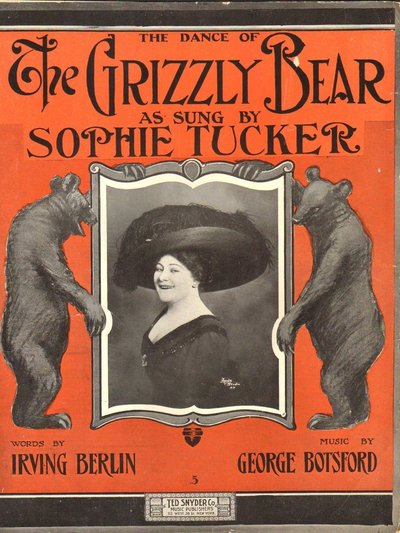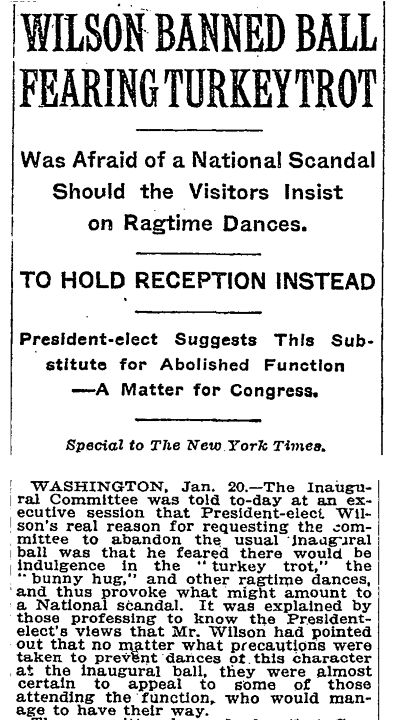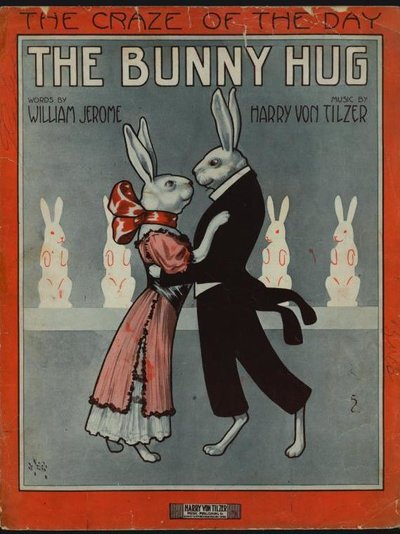 On Friday, November 1, 1912, Jessie wrote in her diary that they had a grand time at the dance “…but didn’t stay long because they started ragging.”
On Friday, November 1, 1912, Jessie wrote in her diary that they had a grand time at the dance “…but didn’t stay long because they started ragging.”
This comment, that because the crowd started ragging Jessie and her friends felt they should leave the dance, really made me curious. A few months earlier in the year (on July 9, 1912) Jessie wrote: “Went to a picnic supper and dance at Riverside Pk. this evening with Richard in our car… All that ‘raggy’ bunch went. They are the *society* crowd but they sure do rag.” On July 18th she went to another dance and wrote: “…danced until 2 o’clock but later the crowd got a little raggy.” But on July 27th Jessie seemed to do a little ragging herself when she wrote that a bunch of her friends came over to her house. “We took up the rug in the parlor and danced. Had cake, some class. Sure did have a rag-doll party. Had a grand time.” (I am guessing a ‘rag-doll’ party was a ragging party.)
In 1912 and 1913 the craze that was sweeping the country was ragtime dancing. These were simple dances that anyone could pick up without special lessons, dances such as the Turkey Trot, the Bunny Hug, the Grizzly Bear and the Boll Weevil Wiggle. The “animal dances,” as they were called, shocked genteel America because couples danced alone and held each other, sometimes closely. President Woodrow Wilson actually cancelled the inaugural  balls for January 1913 to avoid ‘ragging’ dancers creating a scandal. Even the Vatican got involved. Archbishop Henry Moeller announced that Catholics in the Cincinnati diocese who danced the Turkey Trot and other such dances could not be forgiven for their sins. Some cities banned the Turkey Trot and such at all dances. In Spokane they even considered banning the dances in private homes. At least one scholar wrote a book proclaiming that all these dances were imitating sex actions of the ‘lower animals’ and this is what the dancers are thinking of when they dance the Turkey Trot, Fox Trot, Horse Trot, Fish Walk, Dog Walk, Tiger Dance, Buzzard Lope and Boll Weevil Wiggle. But societal changes have a life of their own and everything is connected. Women’s clothing was becoming less restrictive, dating was done in cars and away from the home, and women would soon get the right to vote. The last remnants of the Victorian Age were disappearing and the cultural separation between men and women was becoming a little smaller. The way the dancers held each other and the energetic and almost improvisatory steps to fast, syncopated music fit the times. The ragtime dance craze would fade away with the onset of World War I to be replaced a few years later with the Jazz Age of the Roaring Twenties.
balls for January 1913 to avoid ‘ragging’ dancers creating a scandal. Even the Vatican got involved. Archbishop Henry Moeller announced that Catholics in the Cincinnati diocese who danced the Turkey Trot and other such dances could not be forgiven for their sins. Some cities banned the Turkey Trot and such at all dances. In Spokane they even considered banning the dances in private homes. At least one scholar wrote a book proclaiming that all these dances were imitating sex actions of the ‘lower animals’ and this is what the dancers are thinking of when they dance the Turkey Trot, Fox Trot, Horse Trot, Fish Walk, Dog Walk, Tiger Dance, Buzzard Lope and Boll Weevil Wiggle. But societal changes have a life of their own and everything is connected. Women’s clothing was becoming less restrictive, dating was done in cars and away from the home, and women would soon get the right to vote. The last remnants of the Victorian Age were disappearing and the cultural separation between men and women was becoming a little smaller. The way the dancers held each other and the energetic and almost improvisatory steps to fast, syncopated music fit the times. The ragtime dance craze would fade away with the onset of World War I to be replaced a few years later with the Jazz Age of the Roaring Twenties.
